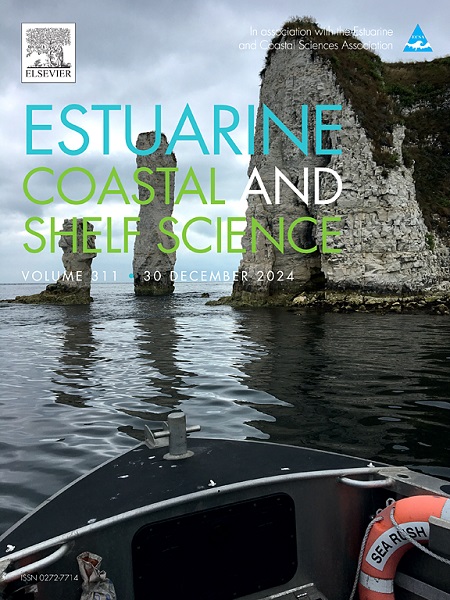kongsjorden冰川驱动梯度的底栖生物代谢和大型动物生物扰动
IF 2.6
3区 地球科学
Q1 MARINE & FRESHWATER BIOLOGY
引用次数: 0
摘要
气候变化使北极变暖的速度比全球平均速度快四倍。由于一种独特的洋流模式,挪威斯瓦尔巴群岛的kongsjorden峡湾正在经历更快的变暖,导致潮汐冰川退缩。增加淡水和陆地输入预计将决定峡湾头部比峡湾口的深度影响,影响底栖生物群落和生物地球化学,选择高度耐受的先驱分类群,如具有高生物扰动和营养循环潜力的多毛类。在这项工作中,从Kongsfjorden的头部和嘴巴收集了16个完整的沉积物岩心,并在原位温度下在黑暗中孵育。评估了孵育过程中底栖生物的养分和气体通量以及反硝化速率,并分析了大型动物的丰度和群落组成。然后对比了底栖生物代谢和大型动物生物扰动,并对冰川扰动进行了解释。冰川前缘(峡湾头)的氧和硝态氮呼吸、甲烷外排和养分再生均高于峡湾口。在峡湾上游,大型动物群落更为丰富,以深穴居多毛类为主,对冰川干扰较强。通过生物扰动,它们在刺激耦合硝化和反硝化、铵和甲烷释放方面发挥了至关重要的作用。我们的模型表明,多毛类对总通量变异性的贡献显著(32%),证实了它们在养分循环中的作用。在这个北极峡湾,气候变暖、冰川退缩和扰动有利于大型动物的先锋物种,促进了营养物质的循环和甲烷的逃逸。本文章由计算机程序翻译,如有差异,请以英文原文为准。

Benthic metabolism and macrofauna bioturbation along a glacier-driven gradient in Kongsfjorden
Climate change is warming the Arctic at a rate four times faster than the global average. Due to a unique pattern in ocean currents, the Kongsfjorden fjord in Svalbard (Norway) is experiencing even more rapid warming causing tidewater glaciers to retreat. Increasing freshwater and terrestrial inputs are expected to determine deep impacts at fjord head more than at fjord mouth, affecting both benthic communities and biogeochemistry, selecting highly tolerant pioneer taxa, such as polychaetes with a high bioturbation and nutrient recycling potential. In this work, 16 intact sediment cores were collected from the head and the mouth of Kongsfjorden and incubated in the dark at in situ temperature. Benthic fluxes of nutrients and gas, and denitrification rates were assessed during the incubations and macrofauna abundance and community composition were analyzed. Benthic metabolism and macrofauna bioturbation were then contrasted and interpreted with respect to the glacier disturbance. At the glacier front (fjord head), oxygen and nitrate respiration, methane efflux and nutrient regeneration were higher than at the fjord mouth. At the fjord head, the macrofauna community was more abundant and dominated by deep burrowing polychaetes, tolerant to glacier disturbance. Through bioturbation, they played a crucial role in stimulating coupled nitrification and denitrification, ammonium, and methane release. Our models indicate that polychaetes contribute significantly (32 %) to the total flux variability confirming their role in nutrient cycling. In this Arctic fjord, warming, glacial retreat and disturbance favor pioneer species of macrofauna that promote the recycle of nutrients and the evasion of methane.
求助全文
通过发布文献求助,成功后即可免费获取论文全文。
去求助
来源期刊
CiteScore
5.60
自引率
7.10%
发文量
374
审稿时长
9 months
期刊介绍:
Estuarine, Coastal and Shelf Science is an international multidisciplinary journal devoted to the analysis of saline water phenomena ranging from the outer edge of the continental shelf to the upper limits of the tidal zone. The journal provides a unique forum, unifying the multidisciplinary approaches to the study of the oceanography of estuaries, coastal zones, and continental shelf seas. It features original research papers, review papers and short communications treating such disciplines as zoology, botany, geology, sedimentology, physical oceanography.

 求助内容:
求助内容: 应助结果提醒方式:
应助结果提醒方式:


